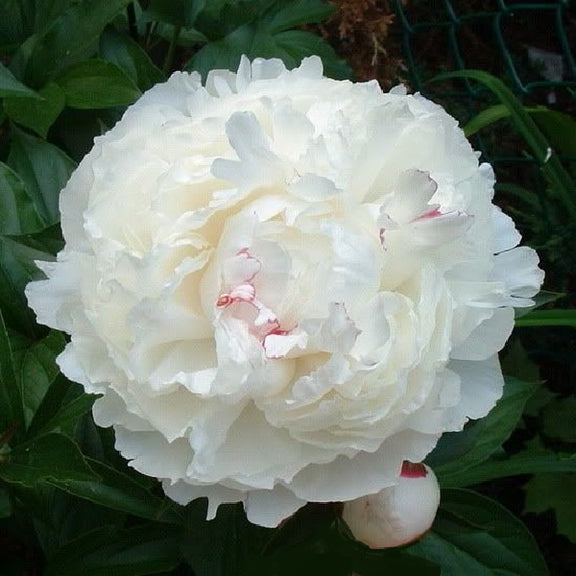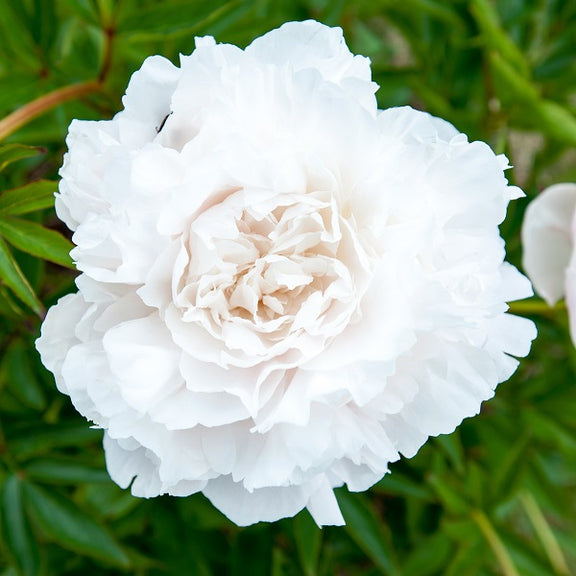I’m a hopeless collector… of everything, you name it. Books, funky art, even funky friends, chickens, daffodils, and lots of other flowers.
So, it’s easy to understand why I’d be drawn to peonies too… like, in a big way. We recently conducted a poll about favorite flowers, and it wasn’t a surprise to find peonies at the top of the list. They are truly the queen of the flowers. You know, those kinds of flowers that evoke the ‘Oh! Be still my heart’ kind of moments in life when you see them.
I’ve planted peonies in fits and starts my entire life, but mainly for others. Occasionally you’ll find a design client with enough space and passion for the flower to really go all out, but those are fairly uncommon these days. For the most part, many gardeners want a few in the garden integrated among other perennials, and I will be the first to say there is nothing wrong with that. Peonies, any way you want to grow them, get my attention and full support. However, I will say that over the years I’ve learned a few things about harnessing my enthusiasm and succumbing to my weaknesses…peonies being one of them. Perhaps the most important lesson to avoid heartache, no matter the scale of your planting, is to get it right the first time. So last year, true to my uncontrollable and unbridled passions, I embarked on a garden of 360 peonies from Gilbert H Wild. Yep… 360 plants (tubers) – 36 varieties, 10 each. The results were spectacular!
Here are some of my notes and takes aways from the field to consider if you’re serious about peonies. Hopefully, you’ll find them helpful:
1. They don’t like to be disturbed. So plant them in a good place and leave them. So, what’s a good place you might ask. Well, full sun or a spot with at least six hours of sunlight. I prefer morning light over the hot afternoon. They need good average soil that drains well. Peonies do not like ‘wet feet,’ so plant in well-draining soil, or else the tubers will surely rot. And don’t scrimp on adding good amendments to the soil, like plenty of humus and well-rotted manure (Yes, manure. Go make friends with a farmer or start raising your own chickens!)
2. Let’s face it, these flowers are extremely ephemeral, like most beauty. So plant multiple varieties that bloom early, mid and late in the season. This will extend the blooming season and your joy. And stop complaining about how the flowers don’t last long! Enjoy the moment and be content. Years ago a customer came into our nursery and wanted a landscape that was evergreen, bloomed all year, and was low maintenance. I suggested they move to another hemisphere, perhaps near the equator, or take up residency on another planet. In all seriousness, the way to enjoy a long season of peony blooms is to plant different varieties that will bloom early, mid, and late in the season. You will see this designation as ‘E, M, L’ in peony categories.

3. Buy nice tubers (as I said, ours all came from Gilbert H Wild and Son) with 4 to 5 eyes, and take your time planting them. Don’t skimp on size, or if you do, don’t complain if they don’t bloom the first year. And, don’t plant the tubers too deep. The eyes are red and needn’t be too deep underground. In the North, deeper planting is advised, but here in the South, I’ve only covered the eyes with about 1/2 inch of soil with great success. Mulching them lightly will help keep the soil temperature and moisture level much more consistent.
4. Choose varieties suited to your climate. Peonies, by their very nature, prefer a cold winter. So if you live in Minnesota you probably grow amazing Peonies, but not so much in Texas. Sorry, it’s just a fact of life. Look at it this way, you don’t see fields of Texas bluebonnets in St. Paul, Minneapolis, right? So, it’s a trade-off, like so much of life. I will say, however, that I’ve found that the early bloomers perform the best in my zone 8a garden. Old standbys like ‘Festiva Maxima,’ ‘Sarah Bernhardt,’ as well as ‘Coral Charm,’ ‘Coral Sunset,’ ‘Pink Hawaiian Coral,’ and many other single bloom types.
5. Once they have bloomed I remove the seed heads. There’s no reason for the plant to continue to put energy into seed production when I’d rather it pour its resources into making larger tubers, which means… you guessed, it will have larger and more abundant blooms next year.
6. And, another tip… for the first couple of years refrain from cutting the blooms from the plants with extra-long stems (Yes, tempting, I know.) The plants with extra-long stems and plenty of foliage left intact are your friends, so don’t get greedy the first few years. You see, these remaining stems and leaves are the workhorses of the plant and continue to help build larger stronger future tubers and thereby more plentiful blooms in seasons to come. Later, once the clumps are established you can cut blooms with long luxurious stems.
7. Oh, and one last thing, the ANTS. Of all the questions I receive about peonies, those concerned about the tiny ants that congregate on the flower buds outweigh all questions combined. These ants are drawn to the sweet nectar-like sap that the bud produces. They do not harm the peony, and they won’t harm you either. Just rinse them off with cool water and let them go about their day… live and let live!
Below are a few photos of our new peony garden after only one year after being planted at Moss Mountain Farm, and some of the resulting blooms.


I give complete credit to the size and quality of the tubers, as well as the time and attention dedicated to the preparation of the soil. We heaped significant amounts of compost that was fortified with barnyard manure into the existing soil. This technique worked like magic!
For those who base their decisions about what to plant in their gardens based on fragrance, I would like to suggest two varieties of peony that I have found to be particularly fragrant – ‘Myrtle Gentry’ and ‘Dr. Alexander Fleming.’ If you choose to include them in your garden, I guarantee you will not be disappointed.

If you are more concerned with color in the garden, review some of my favorite peony varieties, sorted by color.
WHITE:




CORAL:


SOFT PINK:




DEEP PINK:

‘Mary Jo Legare’




To learn more about growing peonies, check out this video!
Happy Gardening!
P. Allen Smith












